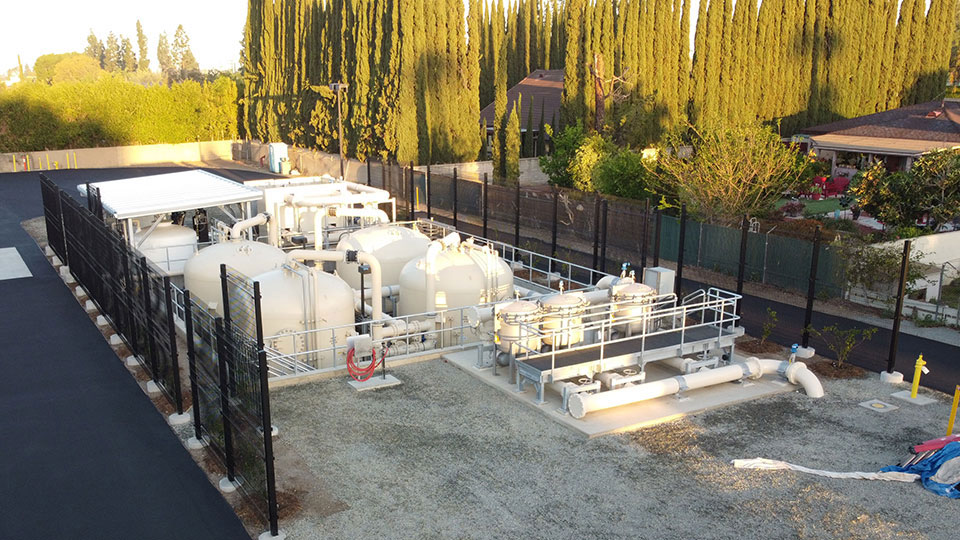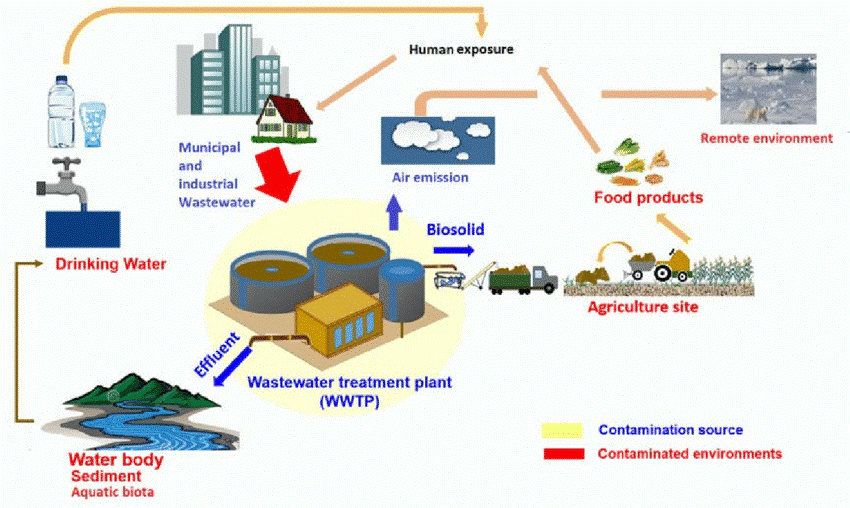M270 PFAS Treatment for Municipal Water Systems
M270 PFAS Treatment for Municipal Water Systems
Blog Article
Advanced Approaches for Effective PFAS Contamination Removal
The relentless obstacle of PFAS contamination requires the exploration of sophisticated elimination methods that can efficiently resolve these damaging materials. Cutting-edge innovations, such as innovative oxidation processes and various adsorption methods, have actually become promising options in mitigating PFAS from affected atmospheres. In addition, the duty of regulatory frameworks in shaping these modern technologies can not be overlooked, as they dictate the rate and instructions of remediation efforts. As we analyze these advanced approaches, it becomes crucial to examine their useful applications and the broader effects for environmental health and wellness and plan.
Understanding PFAS Features
Although per- and polyfluoroalkyl materials (PFAS) have actually been commonly utilized in numerous industrial and consumer items as a result of their special properties, their perseverance in the setting presents significant difficulties to public health and wellness and safety. PFAS are a team of synthetic chemicals characterized by a carbon-fluorine bond, among the greatest chemical bonds known, which adds to their phenomenal security and resistance to deterioration. This security enables PFAS to accumulate in the setting and living organisms, leading to prospective unfavorable health impacts.
These same buildings add to their ecological perseverance, as PFAS do not conveniently damage down through natural processes. Understanding the chemical residential or commercial properties of PFAS is vital for establishing efficient methods to handle and alleviate their environmental impact.
Ingenious Removal Technologies
The determination of PFAS in the setting has stimulated the growth of cutting-edge remediation modern technologies intended at effectively removing these pollutants from impacted environments. Amongst the most promising methods are advanced oxidation procedures (AOPs), which use powerful oxidants to damage down PFAS substances right into much less harmful substances. AOPs can be customized to target certain PFAS frameworks, improving their efficacy.
An additional arising innovation is the usage of adsorption media, such as triggered carbon and ion exchange resins, which can uniquely record PFAS from polluted water. These products have shown substantial elimination efficiencies, although periodic replacement and regrowth are required to preserve efficiency.
Membrane layer filtering strategies, including reverse osmosis and nanofiltration, are also obtaining grip in PFAS remediation. These techniques can efficiently separate PFAS from water, giving a feasible solution for dealing with contaminated sources. In addition, thermal treatment approaches, such as incineration, can decay PFAS into safe byproducts, though they need mindful management to manage emissions.
Collectively, these cutting-edge remediation technologies stand for significant advancements in the continuous fight against PFAS contamination, supplying numerous strategies to restore afflicted settings and safeguard public wellness.

Bioremediation Techniques
Bioremediation strategies provide a promising technique to addressing PFAS contamination by using the all-natural abilities of microorganisms to weaken these consistent substances check this site out (m270 waste management). This technique involves using bacteria, fungis, and other germs that can metabolize or transform PFAS substances right into less hazardous results
Recent advancements in molecular biology and ecological microbiology have enhanced our understanding of microbial neighborhoods and their potential functions in PFAS degradation. Scientists are proactively checking out specific pressures of bacteria, such as Pseudomonas and Bacillus, which have actually shown the capability to damage down particular PFAS substances.
In situ bioremediation methods, where microorganisms are boosted directly in contaminated settings, can be particularly efficient. This approach frequently includes the application of nutrients or electron benefactors to advertise microbial growth and activity. Furthermore, ex-spouse situ methods, such as bioreactors, permit controlled conditions that can enhance destruction rates.
Despite the guarantee of bioremediation, difficulties continue to be, consisting of the intricate nature of PFAS substances and the need for substantial area screening - m270 waste management. Proceeded r & d will be important to fine-tune these techniques and assess their effectiveness in diverse environmental contexts
Adsorption and Filtering Techniques
Attending to PFAS contamination commonly involves using adsorption and purification approaches, which are made to get rid of these relentless chemicals from water and dirt. Amongst the numerous strategies, activated carbon adsorption is widely made use of because of its high surface and porosity, making it possible for reliable capturing of PFAS particles. Granular turned on carbon (GAC) systems are particularly preferred for dealing with huge volumes of polluted water, while powdered activated carbon (PAC) can be used for smaller-scale applications.
Ion exchange materials also reveal guarantee in PFAS removal, operating by trading PFAS ions with much less unsafe ions in the water. This approach has actually demonstrated performance in focusing PFAS this article compounds, promoting their succeeding removal. Additionally, membrane layer filtering methods, such as reverse osmosis and nanofiltration, run by utilizing semi-permeable membrane layers to different PFAS from water, efficiently lowering their concentrations.
While these techniques work, they must be carefully picked based upon the specific PFAS substances present and the ecological context. Constant developments in products scientific research and engineering are bring about the advancement of unique adsorbents and filtering systems that boost removal efficiencies and minimize functional costs, therefore improving total remediation initiatives.
Regulatory and Policy Considerations
Just how can efficient regulative structures boost the management of PFAS contamination? Extensive plans are important to guarantee a collaborated and durable action to the difficulties posed by per- and polyfluoroalkyl substances (PFAS) Rules can establish clear guidelines for tracking, reporting, and remediating PFAS-contaminated websites, fostering responsibility amongst industries and public entities. (m270 waste management)

In addition, economic incentives and grants can be incorporated into policies to motivate the fostering of advanced remediation innovations. Policymakers need to also prioritize r & d, making sure that arising methods for PFAS removal are verified and carried out properly.
Moreover, public awareness and interaction are crucial elements of any kind of governing strategy, empowering communities to promote for their health and wellness. Inevitably, a well-structured governing environment will certainly not just Our site boost the management of PFAS contamination but likewise advertise sustainable practices that safeguard future generations.
Verdict
In recap, the intricacy of PFAS contamination demands the fostering of innovative removal techniques. Ingenious modern technologies such as sophisticated oxidation processes, adsorption techniques, and membrane filtration have shown significant efficacy in removing these relentless compounds from contaminated water resources. In addition, governing frameworks need to develop to support the implementation of these technologies, guaranteeing safe and effective management of PFAS contaminants. Continued r & d in this area stay vital to resolving the challenges positioned by PFAS contamination.
Report this page